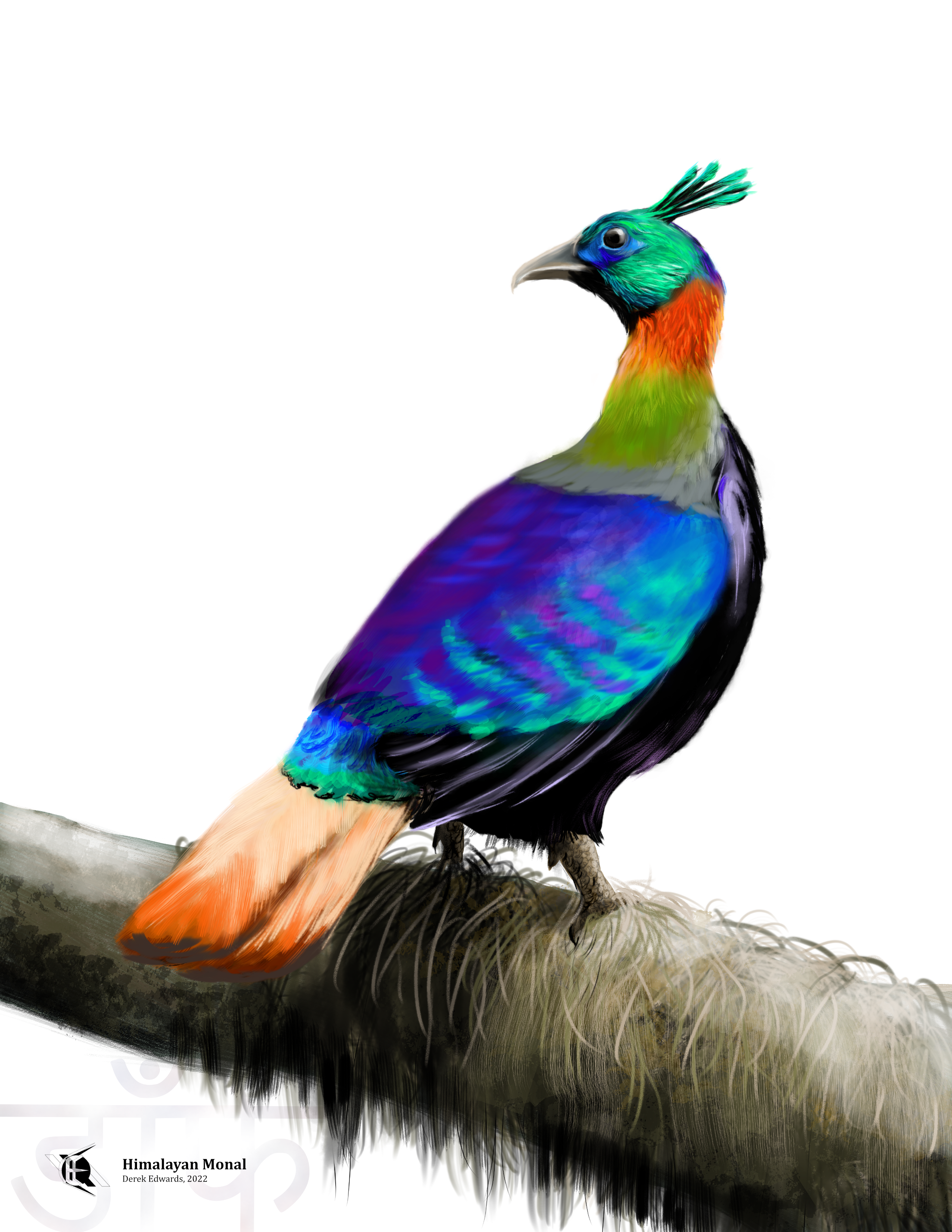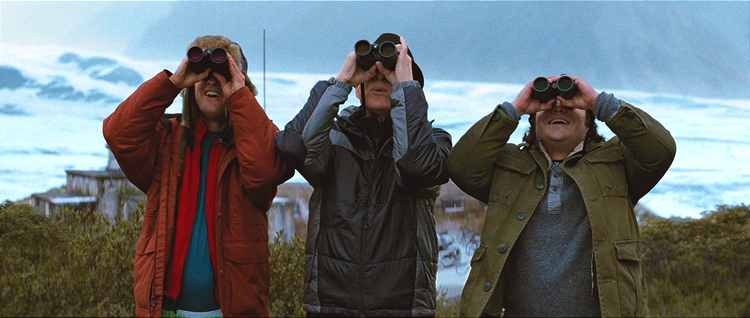
Running Commentary 12/5/2022
Hello,
It’s December, and I’ll be taking the month off from RC. Part of that’s the holidays, but a bigger part is that (a) I wouldn’t be covering any current TV this month anyway and (b) there are some site upgrades I’ve been working on in the background that I’d like to take the time to focus on. I’m not sure that I’ll be able to get it all done this month, but hopefully when I’m back the site will be visibly better. A Running Commentary will resume January 9th, 2023, just in time to start coverage of the next season of BattleBots.
Anyway...
Watching...
The Peripheral
Season 1 of the show has concluded. Here are my notes on the final episodes and on the series as a whole:

- After what felt like a show made up entirely of set-up and backstory, the last two episodes had a lot of things happen, finally, and a lot of characters are now in a different place than they were at the beginning of the show.
- It was a good bit of foreshadowing when Bob is told that he could save his family by sacrificing himself, which Flynne overheard and apparently took to heart.
- The ending was a little hard to follow, but I think I got the gist. It’s always tricky doing this kind of time-travel/interdimensional sort of story, because you have to explain the logic, and can’t really just show things happen and have it make any sense. That makes it hard to tell a story in an engaging way. The Peripheral has been generally pretty good at making the “stubs” make some sense, and even better at telling a story built around the idea without getting too bogged down in the technicals.
- Overall, this show, for the first season, was not the greatest thing I’ve ever seen, but it was still pretty good. It tried for some interesting things when it could have been a much more generic sci-fi action show. My biggest complaint is that the show was not paced very well. Consistently, much more seemed to be happening in Flynne’s time than in Wilf’s. The search for Aelita went so slowly I struggled to remember, week-to-week, who she was and why finding her was so important. Almost all the scenes in post-Jackpot London felt stagnant, when they should have been the more interesting part of the show. Still, I enjoyed The Peripheral, and I am looking forward to the second season.
- Maybe I should read Gibson’s book now.
Playing...

Warfame
I’ve not played as Voruna yet, but I have finished farming her. I also haven’t played as Grendel or Yareli since their re-works. But I have played the new Lua survival missions, and, I must say, they’re fun, rewarding missions. They have their random drop pools, but there’s also the guaranteed resource that you can collect and trade in for those same rewards. That means that, even if you don’t get lucky and get the reward right away, you’re still making progress toward whatever you’re farming. Good stuff, that I hope might serve as a model for future Warframe farms.

Bird of the Week
You might wonder what I do during the Thanksgiving season, considering that I’ve already drawn the turkey. I suppose I might draw it again, but I don’t like repeating birds, outside of a few favorites. Thankfully, the turkey has a great many cousins, such as today’s bird, the Himalayan Monal.
As their common name states, these birds live in the Himalayas, the range of huge mountains that splits the Indian subcontinent from the rest of Asia, and which includes the highest point on Earth’s surface, the peak of Mt. Everest. The monal isn’t found up at the peaks, but they do spend the summer months above the treeline, in what seems like a strangely rugged life for birds that look like miniature peafowl. Their range stretches the full length of the Himalayas, from Afghanistan in the west over to extreme northern Myanmar in the east. Like other pheasants, they feed on seeds, roots, and small invertebrates, sometimes roosting in trees but otherwise mostly keeping to the ground.
As pheasants go, monals have short tails. Even so, the males will fan their tails out as part of an elaborate mating display, which also involves opening and lowering their wings. As is the case with most other members of the family, only the male is brightly colored; females are the same shape, but are brown and speckled. The male monal’s vivid colors make it almost as popular with people as with female monals. They are often kept as fowl and as zoo attractions, and they have been honored as the state bird of Uttarakhand Pradesh, India, and as the national bird of Nepal. More worryingly, the people of India’s Kullu valley traditionally trap monals for their crests, though the practice is less common today.
The name “monal” is used in northern India, and subsequently by English speakers to refer to this bird and a couple of other, closely related pheasants. In Nepal, the bird is called “danfe (डाँफे)”, which Google translates to “step-by-step”, which may refer to the way the bird walks across the ground, or which may be a mistranslation. Any Nepali readers, let me know.
To science, this bird is Lophophorous impejanus. The genus name was given by C. J. Temminck and means “crest bearing” in Greek. The species name honors Lady Mary Impey, and English noblewoman who kept the birds while in India, her husband being the highest-ranking judge in the British-run courts of Bengal. Sir Elijah Impey was the first judge to sentence an Indian (in this case, a tax collector accused of forging documents) to be hanged. The condemned man, Maharajah Nanda Kumar, had just recently brought charges of bribery against the British Governor-General of Bengal, a friend of Chief Justice Impey’s named William Hastings, and Impey was subsequently accused of judicial murder and impeached by the British Parliament, though the impeachment was unsuccessful.
Curation Links
How the Graphical User Interface Was Invented | Tekla S. Perry & John Voelcker, IEEE Spectrum
A history of the graphical user interface, the image-based means by which most computer programs interact with most computer users. Includes histories related things such as computer mice, menu bars, and icons.
When Christmas Started Creeping | Bill Black, Contingent Magazine
Doesn’t it just seem like Christmastime is starting earlier every year? Maybe not anymore, as it seems things have finally settled into starting in mid-November. But, throughout the 20th Century, a commerce-driven movement to expand the season earlier and earlier, in order to expand the gift-shopping period and sell more merchandise, led to a nostalgia-tinged backlash against “Christmas creep” that remains a yuletide tradition to this day.
The library of Alexandria and its reputation | Kiwi Hellenist
The library of Alexandria, in northern Egypt, was one of the most impressive collections of texts in the late ancient world. Its destruction is a sad event, but how much did the loss of the library set humanity back? Considering that the library had been in decline for centuries, that most of its books had been copied and dispersed elsewhere, and that stories of it being destroyed by religious fanatics intent on destroying secular knowledge seem exaggerated if not outright fabricated, the answer is: much less than Sagan suggested.
Beachcombers In Doggerland | Miles Harvey, The Sun Magazine
[FICTION] Parents make a journey to a Florida beach where their son had disappeared into the water years ago.
See the full archive of curations on Notion






Member Commentary